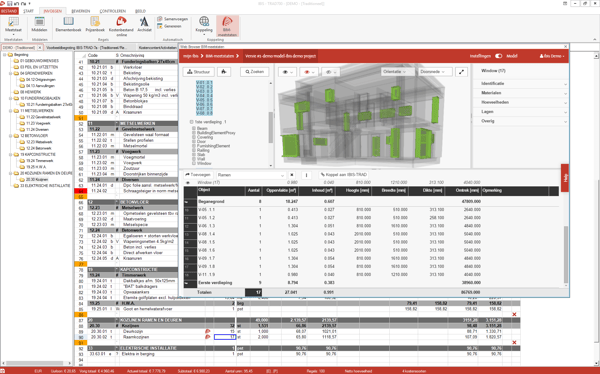For decades, budgets in the construction sector have been made using the traditional and assembly method. Both methods have their respective pros and cons, depending on the type of project, its complexity and the use of a Building Information Model. Why do a BIM and an assembly estimates form a perfect combination?
Assembly estimates, budget and execution
Assembly estimates have a long history, based on the need for more structure and standardisation during construction projects. Decades before the term Building Information Model was first heard, people in the Scandinavian construction sector started using assembly estimates as the foundation for the design, budget and execution of projects. That makes sense, because buildings are made of a large number of different elements and standardisation offers advantages to all parties involved in a project. Just look at the automobile, offshore and aviation industry. In recent years, element-based designing, budgeting and execution are also becoming more popular in the construction sector, as a result of the increased use of BIMs and prefab building components.

Unjustified prejudice against element budgets
A fear of the unknown and a traditional culture in the construction sector has led to some unjustified prejudice against working with assembly estimates. People claim, for example, that this method is not suitable for small projects or old buildings, or that budgets are harder to read. Like the traditional budgeting method, the elements method can be used for any project, depending on the quality of the pricing structure of every element within the assembly cost data. Just like contractors use a master budget for the traditional method, it is important when using the elements method that you have reliable cost data library with prices per m’, m2 or unit. Furthermore, all special conditions have to be taken into account when using this library. However, when all prices per m’, m2 and unit can be automatically retrieved from a BIM, you can estimate cost during any project phase up to 40% faster.
Reducing the risk of errors by making assembly estimates with a BIM
In addition to saving time, a reduced risk of errors is another advantage of making assembly estimates with a BIM. When all parties involved in a project use the same assembly cost data structure during every project phase, accounting for the different levels of detail, any necessary changes can be implemented much faster and without errors. This also makes it far easier to conduct subsequent cost estimates and draw up maintenance plans during the exploitation phase. Of course, an assembly estimate is not the perfect method to use for every project, so the traditional method will not be going away any time soon. However, in a future in which modular construction using prefab components is on the rise and clients favour working with preferred suppliers, a Building Information Model and an assembly estimate is a perfect combination in my opinion.
“Alexander Lassche works as an Account Manager Construction at Ibis (part of Brink Group).”
Would you like to know more?



